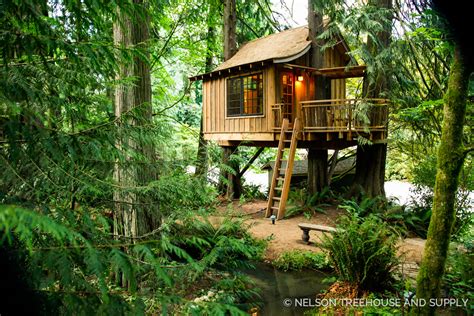Treehouse Attachment: The Key to Long-Lasting Fun
Building a treehouse is a childhood dream for many, a magical space of imagination and adventure. But the true magic isn't just in the structure itself; it's in the attachment—the emotional connection children (and adults!) forge with their unique, elevated haven. This attachment is the key to unlocking long-lasting fun and creating cherished memories that extend far beyond childhood.
This article delves into the profound impact of treehouse attachment, exploring why it's so important and offering insights into fostering this powerful bond.
What is Treehouse Attachment?
Treehouse attachment isn't simply about liking your treehouse; it's a deeper, more significant connection. It's the feeling of ownership, pride, and personal investment that transforms a simple structure into a sanctuary. It's the sense of accomplishment derived from helping build it, the joy of decorating it, and the comfort of knowing it's a special place, uniquely yours. This emotional investment is what makes the treehouse more than just a play area; it becomes a significant part of a child's (or adult's!) identity and self-expression.
Why is Treehouse Attachment Important?
The benefits of treehouse attachment extend far beyond simple playtime. A strong connection to their treehouse provides children with numerous developmental advantages:
-
Promotes Creativity and Imagination: Treehouses naturally spark creativity. They're blank canvases for imaginative play, transforming into pirate ships, castles, or secret hideouts. The feeling of ownership encourages children to personalize their space, further fueling their creative expression.
-
Enhances Problem-Solving Skills: Building a treehouse, even participating in minor construction or decorating, teaches children valuable problem-solving skills. They learn to navigate challenges, adapt to unexpected situations, and find creative solutions.
-
Fosters Independence and Self-Reliance: The process of creating and maintaining their treehouse teaches children responsibility and self-reliance. They learn to take pride in their work, manage their space, and take ownership of their actions.
-
Strengthens Social Bonds: Building a treehouse can be a collaborative effort, involving family, friends, or even the community. This shared experience fosters strong social bonds and teaches children the value of teamwork.
How to Foster Treehouse Attachment
Building a strong attachment to a treehouse isn't accidental; it's cultivated. Here are some key strategies:
-
Involve Children in the Building Process: Let children participate in every stage, from planning and design to construction and decoration. Even small tasks contribute significantly to their sense of ownership.
-
Personalize the Space: Encourage children to decorate and personalize their treehouse to reflect their individual interests and personalities. This makes it truly their space.
-
Create Meaningful Traditions: Establish family rituals or traditions associated with the treehouse, such as storytelling nights or special celebrations. This imbues the space with sentimental value.
-
Maintain and Repair Together: Regular maintenance and repairs offer opportunities for shared experience and learning. It teaches children responsibility and the satisfaction of preserving something they cherish.
-
Respect Their Space: Respect the treehouse as their sanctuary. Avoid entering without permission, unless for necessary maintenance or safety checks.
How Long Does Treehouse Attachment Last?
The attachment to a treehouse can last a lifetime. While the intensity may diminish as children grow, the memories and emotional connection often remain strong. Many adults fondly recall their childhood treehouses, associating them with feelings of freedom, independence, and creative exploration. These lasting memories can significantly impact their own parenting styles and their children’s experiences.
What are Some Common Treehouse Designs for Kids?
The design possibilities are endless! From simple platforms to elaborate structures, the key is to tailor the design to the child's age, interests, and the capabilities of the builder. Consider designs that allow for expansion and modification as the child grows, ensuring the treehouse remains relevant and engaging over time.
How Can I Make My Treehouse Safer?
Safety is paramount. Prioritize sturdy construction, using appropriate materials and techniques. Regularly inspect the treehouse for any damage or safety hazards. Install handrails, secure the access ladder, and ensure the structure can withstand the anticipated weight.
Can Adults Enjoy Treehouses Too?
Absolutely! Treehouses aren't just for kids. Adult treehouses can provide a tranquil escape, a place for relaxation, contemplation, or even a unique guest house. The principles of attachment—personalization, meaningful connection, and a sense of ownership—apply equally to adults as they do to children. The joy and sense of wonder remain timeless.
In conclusion, the attachment to a treehouse is far more significant than merely enjoying a play structure. It's a powerful force that shapes creativity, independence, and lasting memories. By actively fostering this connection, we provide children (and ourselves) with a gift that extends far beyond the structure itself, enriching lives for years to come.

